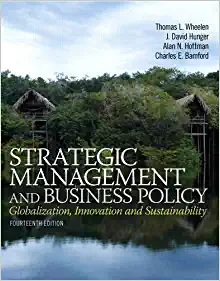

Read the article and answer the following questions:
Article Link:
"Higher education Creative destruction A cost crisis, changing labour markets and new technology will turn an old institution on its head" Jun 28th 2014 The Economist (https://www.economist.com/leaders/2014/06/28/creative-destruction)
If you cannot open the link, I attached the pictures under:
Higher education Creative destruction A materials, changing labour markets and new technology will turn an old institution on Its head Jun 23th 2.014 The Economist HlGI-LER education is one of the great successes of the welfare state. What was once the privilege of a few has become a middle-class entitlement, thanks mainly to government support. Some 3.5m Americans and Sin Europeans will graduate this summer. In the emerging world universities are booming: China has added nearly 30m places in 20 years Yet the business has changed little since Aristotle taught at the Athenian Lyceum: young students still gather at an appointed time and place to listen to the wisdom of scholars. Now a revolution has begun (see article], thanks to three forces: rising costs, changing demand and disruptive technology. The result will be the reinvention of the university. Off campus. online Higher education suffers from Baumol's diseasethe tendency of costs to soar in labour-intensive sectors with stagnant productivity. Whereas the prices of cars, computers and much else have fallen dramatically, universities, protected by public-sector funding and the premium employers place on degrees, have been able to charge ever more for the same service. For two decades the cost ofgoing to college in America has risen by 1.6 percentage points more than ination every year. For most students university remains a great deal; by one count the boost to lifetime income from obtaining a college degree, in net-present-value terms, is as much as $590,000 (see article}. But for an increasing number of students who have gone deep into debtespecially the 47% in America and 28% in Britain who do not complete their courseit is plainly not value for money. And the state's willingness to pick up the slack is declining. In America government funding per student fell by 27% between 200? and 2012, while average tuition fees, adjusted for inflation, rose by 20%. In Britain tuition fees, close to zero two decades ago, can reach 9,000 ($15,900 a year). The second driver ofchange is the labour market. In the standard model ofhigher education, people go to university in their 20s: a degree is an entry ticket to the professional classes. But automation is beginning to have the same effect on white-collarjobs as it has on blue-collar ones. According to a study onr Oxford University, 47% of occupations are at risk of being automated in the next few decades. As innovation wipes out some jobs and changes others, people will need to top up theirhuman capital throughout their lives. By themselves, these two forces would be pushing change. A thirdtechnologyensures it. The internet, which has turned businesses from newspapers through music to book retailing upside down, will upend higher education. Now the MOOC, or \"Massive Open Dnline Course\more comfortable than the weaker outside the structured university environment) and among teachers (superstar lecturers will earn a fortune, to the fury of their less charismatic colleagues). Politicians will inevitably come under pressure to halt this revolution. They should remember that state spending should benefit society as a whole, not protect tenured professors from competition. The reinvention of universities will benefit many more people than it hurts. Students in the rich world will have access to higher education at lower cost and greater convenience. MOOCs' flexibility appeals to older people who need retraining: edX, another provider, says that the median age of its online students in America is 31. In the emerging world online courses also offer a way for countries like Brazil to leap-frog Western ones and supply higher education much more cheaply (see article). And education has now become a global market: the Massachusetts Institute of Technology discovered Battushig Myanganbayar, a remarkably talented Mongolian teenager, through an online electronics course. Rather than propping up the old model, governments should make the new one work better. They can do so by backing common standards for accreditation. In Brazil, for instance, students completing courses take a government-run exam. In most Western countries it would likewise make sense to have a single, independent organisation that certifies exams. Reinventing an ancient institution will not be easy. But it does promise better education for many more people. Rarely have need and opportunity so neatly come together










